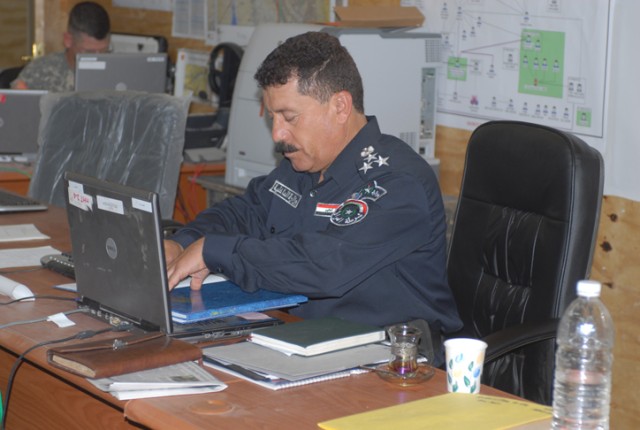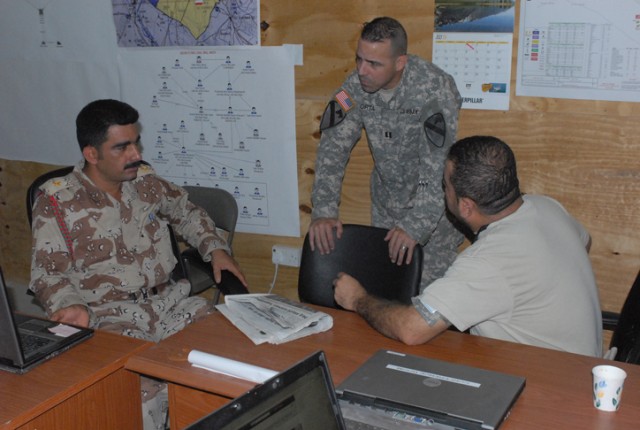FORWARD OPERATING BASE WARRIOR, KIRKUK, Iraq -- A group of Iraqi liaison officers have begun working side-by-side with Soldiers from 2nd Brigade Combat Team, 1st Cavalry Division, to improve security and coordination.
The liaison officers come from the Iraqi Army, Iraqi Police, Kurdish Army and Iraqi Oil Police, who work together on Forward Operating Base Warrior in Kirkuk to share information and coordinate key assets with the U.S. military and one another.
The officers began working together one week ago and have already begun to see the positive results of their coordination.
"It is very easy to share information when you are working this closely together," explained Brig. Gen. Mohammed Sala Abass, an IP working as a liaison officer on FOB Warrior. "This coordination has given promising results and has sped up the process of dispersing information between different agencies. It should have happened a long time ago."
"It gives us a common operational picture between IA, IP, OIP and the Kurdish Army," said Maj. Kevin Capra, brigade planner for 2nd BCT. "We are [all] sharing information on operations, coordinating movements and sharing intelligence."
During a recent vehicle-borne improvised-explosive device attack in Kirkuk city, the liaisons proved to be a vital asset.
The IP liaison spoke directly to the first police responders on the scene and was able to give the brigade a clear idea of what was going on, explained Capra.
Another benefit of the coordination is bringing together groups that have had conflicts in the past, primarily the Kurdish Army and IA.
"[We are] being open and transparent," said Capra. "If there is any question on what different elements are doing, such as IA moving through contentious areas, we are able to notify all the leaders who need to know very quickly. This open dialogue really helps avoid unnecessary tension and overreactions due to misunderstandings."
The fact that the liaisons represent multiple military organizations allows them to share information that enables them to hunt terrorists wherever they may be.
If the Kurdish Army, for example, were to have information on a suspected terrorist inside of a police-patrolled city, they can use the liaison to pass information to the IP in the city that need to know, explained 2nd Lt. Nabil Abdulla Mahmood, a Kurdish Army liaison.
"The process is very fast now," he said.
The liaison partnership will hopefully continue to thrive even when U.S. troops are gone.
"I want to see it stay like this," said Abass. "We are going to try and keep this intact."




Social Sharing